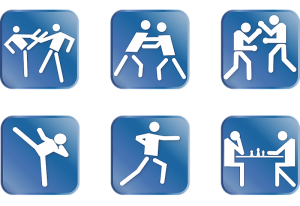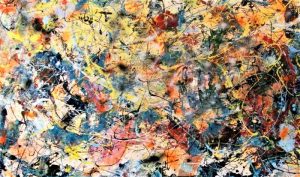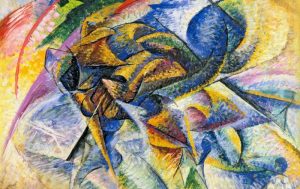Pictogram
Pictograms are symbols or signs that allow us to represent something specific. They are signs that are drawn, are not terms derived from language and figuratively represent objects of reality or their meanings. They are groups of symbols that precede the current writing. Comics that we usually see around us can be classified as pictograms, since they are graphics that do not have a text. Its origin is Greek and Latin, and the term consists of two basic words: Picto, which means "painted" and is of Greek origin; and Grama, which is derived from Greek and means "written". The purpose of the pictograms is to provide information or point to something specific. They can be organized into categories depending on the function you intend to perform, so we can mention, for example, historical pictograms, mathematics, diagrams and graphics. Some of the most common signs we see on a daily basis can be found on road safety signs and in places that are intended for entertainment such as restaurants, hotels and shopping malls.

Related terms
Alphabet, Abkhaz, Impure, Abugida, Syllabary
What is a pictogram?
A pictogram is a group of symbols or signs that are used to represent ideas, provide information, or point to something specific. It is a method of communication that dates from ancient times, because our ancestors used them to communicate. They are often basic designs with basic colors and can be found anywhere to provide a warning or message.
Pictogram history
In ancient times, the man who lived since prehistoric times, had the need to document and have records of information regarding the situations around him, and used Pictograms drawn in caves where they generally lived. It had religious, hunting and information implications. From these drawings that were intended to represent the reality of the moment, groups of symbols with greater complexity were created or invented. It was also common to find them in temples and Pharaonic tombs, as they were used as a medium for telling battles and stories. In some places they are still used as a communication method, mainly in places where literacy has not yet reached.
Modern use of pictogram
Currently, the pictogram aims to convey messages to the public easily and quickly. These messages are clear and understandable from the first moment they are observed. These symbols help us to break down the barriers that languages may represent, because they are symbols that are easy to understand worldwide. It is common to find them in health services, to report warnings on roads, in education centers, and for people to obtain information. Currently, for a pictogram to be used properly, it must meet certain important characteristics. A pictogram must be understandable by the majority of people who see it, regardless of their education, language or if they have any type of disability. In addition, pictograms must be legible to the public in order to maintain adequate visual coherence; and, finally, they must be very simple in order to avoid confusion or irrelevant information.
Application of pictogram in mathematics
One of the main uses of the pictogram is in mathematics. The use of tables with signs is an excellent way to organize information and to understand the information provided in an easier way. Mathematical data is easier to understand when using pictograms. A mathematical graphical pictogram gives us information through drawings about what is being studied at the moment, they can easily represent absolute and relative frequencies of variables, categories or time periods. There are a large number of graphs that can be used, such as bar graphs made with symbols of proportional length, drawings in which the symbols are equivalent to relative or absolute frequency units, and areas where the drawing or symbol varies according to frequency.
Application in statistics
The pictogram is widely used in statistics. By using symbols and signs to represent sets of data, statistics become easier to understand and apply. Statistical frequencies are identified by the accumulation of symbols so that, statistical reports are easier to understand.
Pictograms are often used as an alternative method of communication. Many of the people who use them have some degree of difficulty communicating correctly through words or expressing ideas, which makes these groups of symbols important for interpreting, understanding and transforming what they are really thinking.
How to cite this article?
Briceño V., Gabriela. (2019). Pictogram. Recovered on 4 January, 2025, de Euston96: https://www.euston96.com/en/pictogram/









